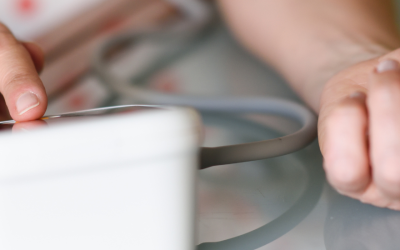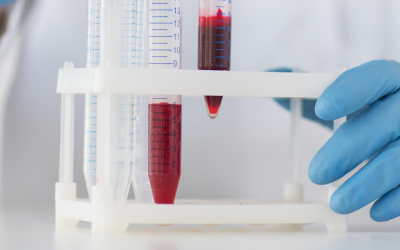
Research Roundup: Genetics, Vitamin D
Several major disorders that occur during pregnancy result from failure of the placenta to implant correctly into the uterus or womb. During early pregnancy cells from the placenta, known as trophoblast cells, invade into the uterus and tap into the mother’s blood supply to sustain the growing baby. Failure of this process can lead to insufficient supply of blood to the placenta resulting in preeclampsia, as well as low birth weight babies, stillbirth, or recurrent miscarriage.
The invading placental trophoblast cells intermingle with maternal immune cells in the uterine lining. Trophoblast express not only maternal but also paternal genes and these will be different or “foreign” to the mother. Maternal immune cells can recognize these “foreign” fetal molecules and are thought to regulate the implantation process, allowing sufficient but not excessive invasion of the placenta. In the preeclamptic pregnancy, this interactive process goes wrong and there is inadequate modification of the blood vessels which can lead to “starvation” of the placenta and subsequently triggering of the preeclamptic syndrome later in gestation in the mother.
The important molecules displayed by the trophoblast that are recognized by maternal immune cells are members of the HLA (Human Leucocyte Antigen) family known as HLA-C. The maternal receptors that recognize and interact with HLA-C are the KIR family (Killer Immunoglobulin-like Receptors). These two gene families (HLA and KIR) are very variable or polymorphic, meaning that each mother will inherit a particular set of KIR genes and the fetus will have two HLA-C genes, one from mother and father. This means maternal KIR will bind to fetal HLA-C in a way that can vary from one pregnancy to another. The interaction should lead to successful implantation but sometimes the combination of these genes from mother and baby results in inadequate invasion and leads to complications in the pregnancy.
Last month, in the Journal of Clinical Investigation, a team from the University of Cambridge reported new findings on the genetics underlying preeclampsia and other placental diseases. Women with a particular set of KIR genes – the KIR-AA genotype – who were carrying a fetus with a HLA-C2 gene were at higher risk of developing preeclampsia than those carrying other KIR/HLA-C gene combinations. This was especially so if the fetus had inherited the HLA-C2 gene from the father.
These genetic findings do not translate directly into therapeutic interventions in preeclampsia, although it may be useful eventually in choosing a compatible sperm donor in IVF. The results tell us more about why placental implantation goes wrong sometimes. They might explain the old idea of the “dangerous male”, where pregnancy with particular men often results in preeclampsia. The report does emphasize the common underlying processes that would explain why a history of miscarriage or infertility is associated with a heightened risk of preeclampsia in subsequent pregnancies. Furthermore, this risk cannot be affected by lifestyle, which helps those of us who “did everything right” to explain what went wrong.
Also this month, a team from the University of British Columbia, Vancouver, followed up on the connection between blood levels of vitamin D and preeclampsia in the British Journal of Obstetrics and Gynecology. It makes sense to think that the levels of vitamin D in the maternal bloodstream might have something to do with the later development of preeclampsia, because the vitamin is already known to affect some immune responses and because early small observational studies have shown an increased level of preeclampsia in the group of women with low vitamin D levels.
To check this, researchers measured serum levels of vitamin D in a population of women at high risk for preeclampsia, and then recorded their pregnancy outcomes. While the majority of the women had low levels (over three-quarters of the test population had lower levels than normal, and half were technically deficient), there was no connection between the severity of their pregnancy outcomes and the level of deficiency. In other words, some women with normal vitamin D levels still had severe preeclampsia, and some women who were deficient according to current guidelines did not go on to develop preeclampsia at all. This finding suggests that supplementing vitamin D may not have an effect on preeclampsia, although it is still interesting that women who develop the condition also tend to have low levels. There may be some connection between "having the sorts of genes or environment that lead you to develop low levels of vitamin D" and "having the sorts of genes or environment that lead you to develop preeclampsia."
A special thanks to Dr. Ashley Moffett, University of Cambridge, and Dr. Timothy Green, University of British Columbia, for their expertise and technical input.
Related Articles

Your story is needed to improve outcomes for moms like you. Add your voice to critical preeclampsia research to ensure that every story is heard.

Frequently asked questions about the Preeclampsia Registry, a patient-driven registry and biobank.

The Preeclampsia Foundation offers research funding, study recruitment, and other patient engagement services to researchers.

We provide research grant funding to advance progress towards detection, prevention, or treatment of preeclampsia, HELLP syndrome, and other hypertensive disorders of pregnancy.

Hypertensive disorders of pregnancy significantly increase your risk of developing long-term heart problems. A careful review of blood pressure elevations during and after pregnancy may assist in iden...

Hypertensive disorders of pregnancy (HDP) can affect different groups of women in different ways, and even though we know this happening, we don't fully understand why. There are many factors, like bi...

There is growing evidence that studies examining pregnancy and its complications need to start early within the pregnancy to fully understand the nature of preeclampsia. Key gestational milestones, wh...

It is known that chronic hypertension and high BMI (body mass index) are risk factors for hypertensive disorders of pregnancy (HDP). Studies documenting this risk have usually assessed blood pre...

Several biomarker tests are under development to predict or diagnose preeclampsia. While none of these tests are yet widely accepted in U.S. clinical practice, two FDA-approved tests are available in...

